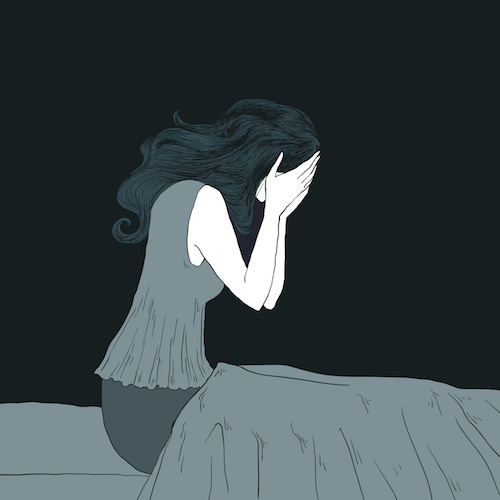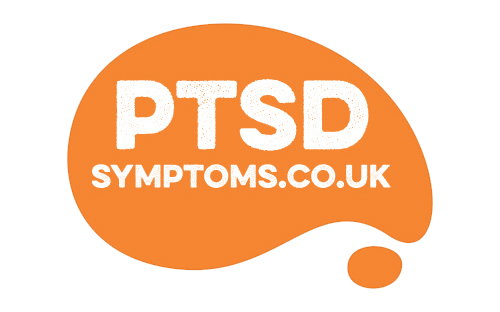What Are Symptoms of PTSD
Symptoms of a post-traumatic stress disorder usually begin in the first 3 months after trauma. However, it can sometimes take months or even years before symptoms appear.
The repetition syndrome appears in a second time: the patient sees, at more or less regular intervals, the traumatic scene.
People with post-traumatic stress disorder experience considerable loss of control. You have the impression of no longer having anything to do with it. During the traumatic event, we often feel a sense of helplessness that we continue to experience in everyday life, in case of post-traumatic stress disorder. We will then notice that things that were previously self-evident are no longer such. We feel anxious and we have no confidence in people or in their environment. We feel vulnerable and we are constantly afraid.

Symptoms of a post-traumatic stress disorder usually begin in the first 3 months after trauma. However, it can sometimes take months or even years before symptoms appear.
The repetition syndrome appears in a second time: the patient sees, at more or less regular intervals, the traumatic scene.
People with post-traumatic stress disorder experience considerable loss of control. You have the impression of no longer having anything to do with it. During the traumatic event, we often feel a sense of helplessness that we continue to experience in everyday life, in case of post-traumatic stress disorder. We will then notice that things that were previously self-evident are no longer such. We feel anxious and we have no confidence in people or in their environment. We feel vulnerable and we are constantly afraid.
Although the traumatic event goes back to the past, we are constantly preparing for danger. We do not feel safe anymore and we always feel in danger. For example, if you fought in the war, you may still hear hissing bullets while you’re at home. People who have been raped, for example, are very anxious and often dare to leave the house. This anxiety persists and does not stop. We are therefore in a permanent state of anxiety and stress.
The repetition syndrome
is characterized by nightmares of repetition (the most frequent sign) where the patient relives the scene at the origin of his disorder.
Sleep is interspersed with nightmares that can occur several times in one night. Nightmarish visions can also occur during the day. They can exactly reproduce the scene or distort it.
For some patients, other very real situations can be assimilated to the original situation, and at other times, these visions, relived as “flashbacks”, are purely imaginary.
These “nightmares” are loaded with intense emotion. It is not uncommon for the subject to start screaming, in the grip of a crisis of acute anxiety triggered by these visions.
These reactions are often accompanied by very characteristic startle reactions, reflecting the fact of being on the alert, constantly alert.
The repetition syndrome is sometimes expressed by incessant ruminations during which the subject imagines endlessly different scenarios: he could have avoided the trauma, not be there, behave differently …
These ruminations also fuel the victim’s sense of guilt.
Avoidance of stimuli associated with the traumatic event
As the expression suggests, the child or adolescent avoids or tries to avoid any memory, thoughts or feelings related to the event. It can also avoid or try to avoid any external reminders (of people, places, conversations, activities, situations or objects) that bring back memories, thoughts or painful feelings about the traumatic event .
Negative thoughts and mood disorders
A person with PTSD may:
- be unable to remember an important aspect of the traumatic event;
- maintain negative opinions or persistent and exaggerated expectations of themselves or those around them;
- blame or blame other people for the causes or consequences of the traumatic event due to persistent and irrational thoughts;
- often experience negative emotions such as fear, horror, anger, guilt or shame;
- lose interest in activities or give up activities that mattered to him before;
- feel detached (separated) from others;
- being constantly unable to feel positive emotions such as joy, satisfaction or love.
- Abnormal reactions
- A person with PTSD may be more reactive to their environment and what is said about them. For example, she can:
- be more irritable or have tantrums without significant provocation;
- be violent, verbally or physically, towards people or objects, or even having rabies;
- be more easily frightened by their environment or be more and more aware of it;
- find it hard to focus
- have disturbed sleep;
- adopt a carefree or self-destructive behavior
- aggravating factor
A lack of support or negative behaviors of the environment (criticism, blame, lack of understanding and empathy, or hostile, controlling, intrusive or stressful behaviors) aggravate the symptoms. The victims painfully feel the judgment of others about them. Support from the entourage is very important.
Legal proceedings are often very painful: appearing before a judge, answering lawyers’ questions, accumulating proof of his / her legacy, submitting to medical examinations etc …
Police investigations during which the victim has to answer very intrusive, indiscreet and confronting questions.
